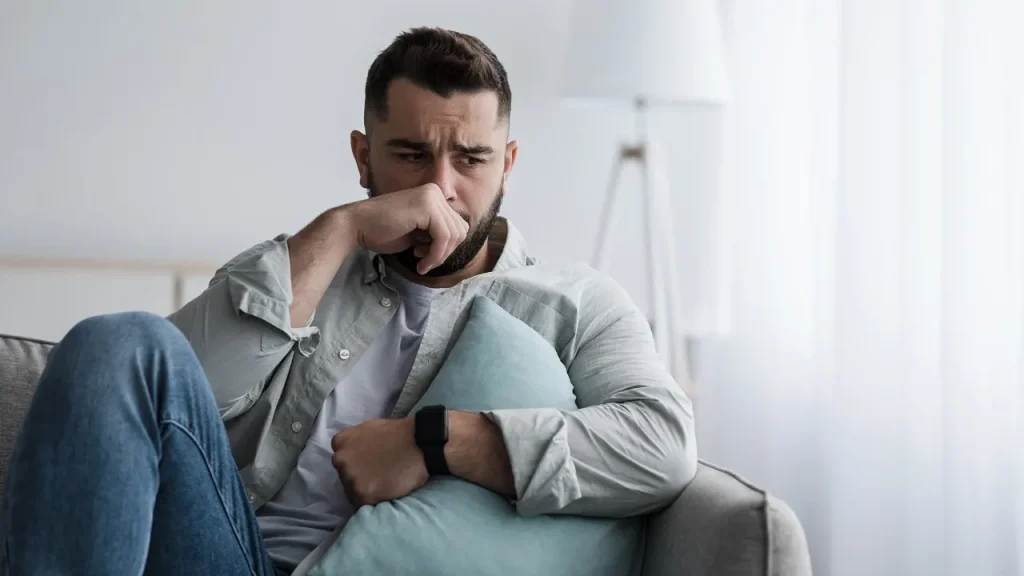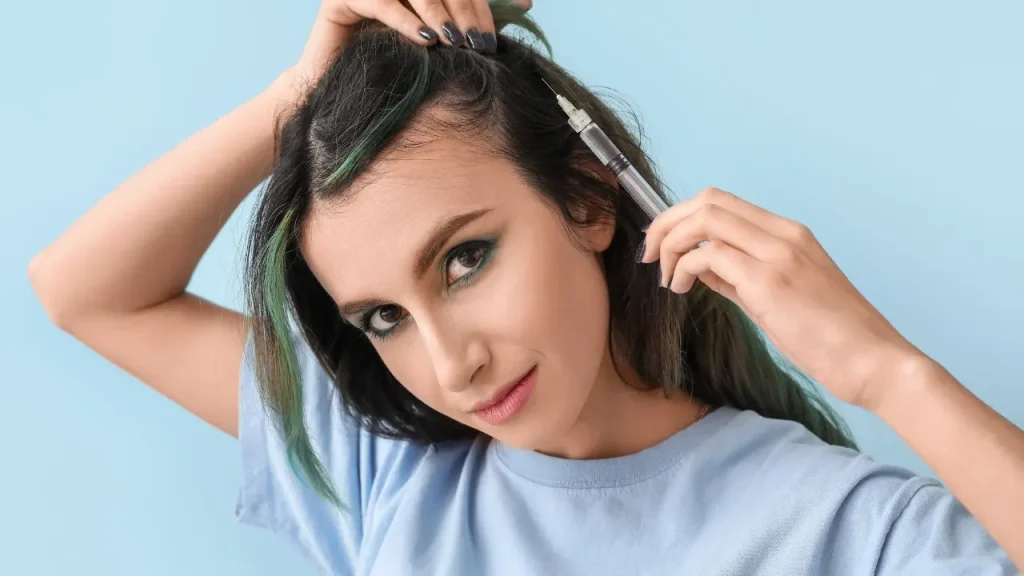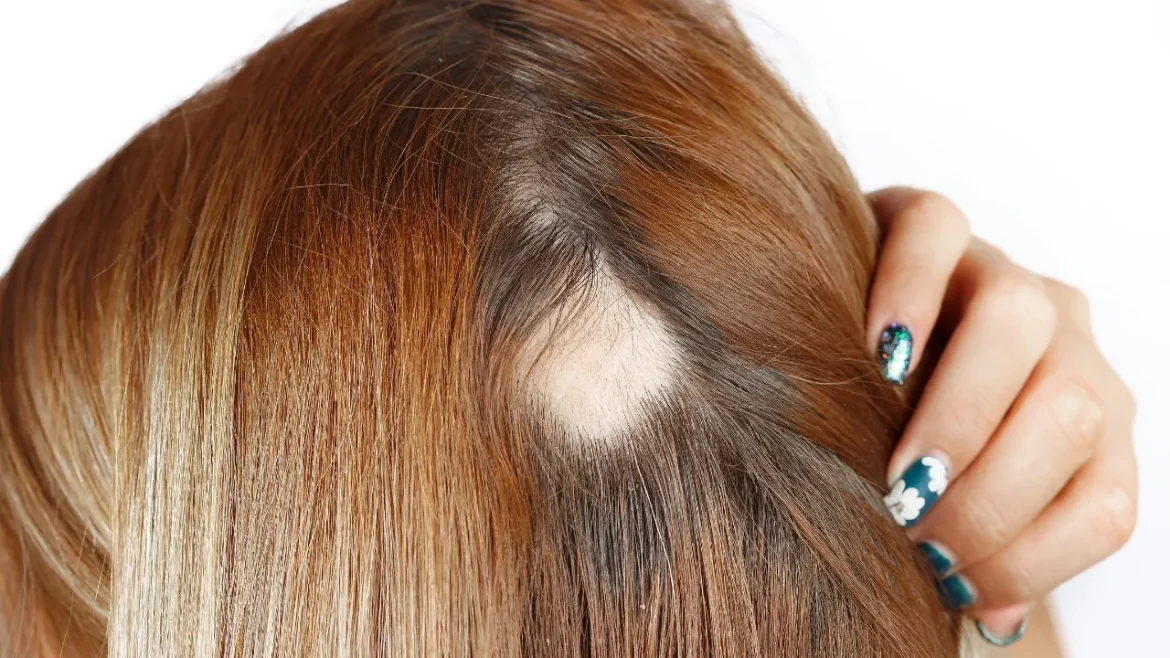Description
Alopecia areata is a condition that causes non-scarring loss of hair and predominantly affects the scalp. However, it may also impact other body parts that have hair. Round, distinct areas of hair loss, often on the scalp, characterize Alopecia areata. Alopecia totalis or Alopecia universalis, which refers to the full loss of all body hair, may occur in rare situations. Due to an autoimmune reaction, the immune system of the body wrongly targets hair follicles, which causes them to shrink and eventually stop growing hair.
You May Also Like:
TOP 7 HEALTHY SCALP TIPS FOR AMAZING HAIR
Alopecia areata: Description, Causes, And Treatment Protocol is an original (HealthXWire) article.
Possible Causes
The precise cause of Alopecia areata cannot be entirely understood. Nevertheless, research indicates that it has a multiple etiology that combines immunological, genetic, and environmental components, making it a complex illness. The following list includes several alopecia areata’s potential causes and aggravating elements:
Genetic Predisposition:
Alopecia areata may have a hereditary component, according to studies. The likelihood of developing the illness increases particularly for people who have a family history of it, suggesting a possible genetic predisposition. However, conclusions have not yet been thoroughly determined which individual genes contribute to Alopecia areata risk.
Autoimmune Factors:
Alopecia areata occurs when the human immune system unintentionally assaults its own natural hair follicles. This immunological reaction causes inflammation, shrinkage, and disruption of the hair development cycle. This immunological response’s precise cause is still a mystery.
Immunological Dysregulation:
Alopecia areata is significantly impacted by immune system dysfunction. The immune response that targets the hair follicles is thought to involve T-helper cells, in particular, T-helper 1 cells. Hair follicle death is facilitated by the secretion of pro-inflammatory cytokines along with additional immune signalling molecules.
Hormonal Imbalances:
Alopecia areata’s occurrence or worsening has been linked to hormonal shifts or imbalances. There is evidence that some people lose their hair during or following pregnancy, at the start of adolescence, or throughout menopause. Hormonal changes may affect the immune system and aid in the onset of the illness.
Environmental Triggers:
Alopecia areata among susceptible people may be brought on by or made worse by a variety of environmental factors. Infections from bacteria or viruses, exposure to specific toxins or chemicals, and damage to the skin, including skin injuries or surgical treatments, may all function as triggers. It is crucial to remember that not everyone who is exposed to such triggers will have Alopecia areata.
Associated Conditions:
Other autoimmune conditions like systemic lupus erythematosus, thyroid problems, vitiligo, and rheumatoid arthritis have a history of comorbidity with Alopecia areata. This shows potential common pathophysiology and immune dysfunction in action.
Psychological Factors:
The aggravation of Alopecia areata has been connected to psychological stress, worry, and emotional trauma. Stressful life experiences, like the death of a family member, divorce, or significant life changes, may cause or exacerbate periods of hair loss.

Exacerbating and Mitigating Factors
Alopecia areata develops and progresses because of, aggravating and moderating variables. Even if the precise causes and mechanisms remain poorly understood, recognizing and controlling these elements can assist to lessen the condition’s severity and effects. Following are some things that can help or hurt alopecia areata:
Exacerbating Factors:
Illness and Infections:
AAlopecia areata may be brought on by or made worse by specific diseases, especially those that boost the body’s immune response or result in considerable physiological stress. Infections, like bacterial or viral infections, may render the disease worse. It is critical to address underlying disorders quickly and effectively.
Emotional Stress:
Alopecia areata has been linked to the start and worsening of psychological stress. Stressful life experiences, including a traumatic encounter, significant life upheavals, or persistent stress, may cause or exacerbate occurrences of hair loss. Techniques for managing stress, like mindfulness, counseling, and relaxation exercises, may be helpful.
Medications:
Alopecia areata may be made worse by some drugs, such as ones for blood pressure, autoimmune diseases, and mood problems. When starting or switching medications, it is crucial for you to go over potential hazards and adverse reactions with a medical practitioner.
Hormonal Changes:
Alopecia areata’s onset and course may be influenced by hormonal imbalances that take place during pregnancy, the postpartum period, or menopause. In people who are sensitive, these hormonal changes might start or aggravate hair loss.
Mitigating Factors:
Healthy Lifestyle:
Maintaining a healthy lifestyle, which includes regular exercise, a well-balanced diet, and sufficient sleep, can improve overall health and possibly lessen the effects of Alopecia areata. A healthy diet full of antioxidants, vitamins, and minerals might assist hair growth.
Emotional Support:
Individuals can manage the emotional effects of Alopecia areata by having an effective support system and receiving emotional assistance from friends, family, and community groups. Self-acceptance and excellent emotional health may lower stress levels and enhance the overall standard of life.
Stress Management:
Applying stress-reduction strategies including yoga, regular exercise, deep breathing exercises, meditation, and relaxing activities might help lower stress levels and perhaps improve the intensity of alopecia areata.
Sun Protection:
Avoiding sunburn and possible inflammation that can aggravate Alopecia areata might help avoid sunburn on the scalp and other exposed regions. Sunscreen and caps can also be helpful.
Prevention of Hair-Damaging Behaviors:
Alopecia areata may become worse due to some hairstyling techniques, including tight hairstyles, overheating, and chemical treatments. It is best that you to stay away from such behaviors and choose gentle hair care regimens.


Standard Treatment Protocol
Intralesional corticosteroid injections, topical corticosteroids, and immunosuppressive medications are all part of the typical treatment plan for Alopecia areata. These therapeutic methods seek to inhibit the inflammatory response, lessen inflammation, and encourage hair regeneration. The best course of treatment should be decided upon by you speaking to a dermatologist or other medical expert. The specific treatment strategy may change depending on the magnitude and seriousness of the ailment as well as patient-specific variables, such as the following:
Intralesional Corticosteroid Injections:
Corticosteroids are injected directly into the affected regions of the scalp during intralesional corticosteroid injections. For more severe or resistant instances of alopecia areata, this therapy is usually employed. The injections support hair regeneration by reducing inflammation, suppressing the local immune system reaction, and suppressing it locally. It may be necessary to attend more than one treatment session, typically every four to six weeks.
Topical Corticosteroids:
Regarding the first-line therapy over mild to moderate instances of alopecia areata, topical corticosteroids have frequently been suggested. These drugs work by lowering inflammation and the immune system’s function within the hair follicles and are administered by specialists directly on the scalp or other afflicted locations. The best benefits come from constant and regular administration.
Systemic Immunomodulatory Agents:
Systemic immunomodulatory drugs may be used in severe situations or while other therapies are unsuccessful. These drugs try to control the immune response and stop the autoimmune reaction. Oral corticosteroids like prednisone, immunosuppressants like cyclosporine and methotrexate, and directed immune treatments like Janus kinase inhibitors tend to be a few instances of systemic immunomodulatory drugs used to treat Alopecia areata.


Treatment Options
Various adjunct treatment methods might be taken into consideration in addition to the usual treatment protocol to support traditional therapies and possibly enhance treatment outcomes. The following are some examples of these therapeutic choices:
Acupuncture:
Thin needles are inserted into specific body locations during acupuncture treatments. According to an extensive body of research, acupuncture might help those suffering from Alopecia areata regrow their hair. To determine its effectiveness and the best procedures for therapy, more research is necessary.
Scalp Massage:
The stimulation of hair development by regular scalp massage can occur from improved blood flow that reaches hair follicles. Individuals can move their fingertips in soft circles for some minutes each day.
In order for you to deal with Alopecia areata successfully, stress management is crucial because stress can make the problem worse. Deep breathing techniques, yoga, meditation, and mindfulness activities can all help lower stress and improve overall health, as aforementioned.
Nutritional Supplements:
Some dietary supplements may promote the development and health of hair. For those of you with Alopecia areata, vitamins including biotin, vitamin D iron, and zinc are frequently advised. To ascertain the proper dosage and period of supplementation, it is advised to speak with a healthcare practitioner.
Natural and Herbal Remedies:
As potential supplemental therapy for Alopecia areata, some herbal supplements and natural cures may be one of a set of solutions. Aloe vera, ginseng, lavender oil, green tea extract, and saw palmetto are a few of them. Despite anecdotal evidence points to their effectiveness, more research is needed to determine whether they are safe and beneficial.
However, it is important for you to remember that adjunct therapies ought not to be utilized in place of or as a substitute for conventional treatments. They ought to be employed with the assistance of a medical expert as supplemental treatments to traditional ones. It is crucial to keep an eye out for any adverse reactions or interactions between ongoing therapies. Setting reasonable expectations for these adjunct therapies’ results is crucial because individual responses to them can differ.
Conclusion:
Alopecia areata is an autoimmune disorder. It is a condition that affects the scalp, but potentially other places on the body where it is natural to grow hair. It can be exacerbated by environmental factors as well as influenced by a patient’s emotional and psychological state. This may contribute to the holistic ways in which the condition is perceived and treated. Affected areas of the skin will be very sensitive, so please proceed with gentle caution. It is not a condition that recedes with one or even several treatments. Please also cultivate awareness in how which or what current lifestyle choices you engage in that are contributing to the persistence of Alopecia areata.


References:
- “Alopecia Areata.” Retrieved from: https://www.webmd.com/skin-problems-and-treatments/alopecia-areata
- “Alopecia Areata.” Retrieved from: https://my.clevelandclinic.org/health/diseases/12423-alopecia-areata
- “Alopecia areata: Causes, diagnosis and treatments.” Retrieved from: https://www.medicalnewstoday.com/articles/70956
- “Everything You Need to Know about Alopecia Areata.” Retrieved from: https://www.healthline.com/health/alopecia-areata
Important Note: The information contained in this article is for general informational purposes only, and should not be construed as health or medical advice, nor is it intended to diagnose, prevent, treat, or cure any disease or health condition. Before embarking on any diet, fitness regimen, or program of nutritional supplementation, it is advisable to consult your healthcare professional in order to determine its safety and probable efficacy in terms of your individual state of health.
Regarding Nutritional Supplements Or Other Non-Prescription Health Products: If any nutritional supplements or other non-prescription health products are mentioned in the foregoing article, any claims or statements made about them have not been evaluated by the U.S. Food and Drug Administration, and such nutritional supplements or other health products are not intended to diagnose, treat, cure, or prevent any disease.
Table of Contents


